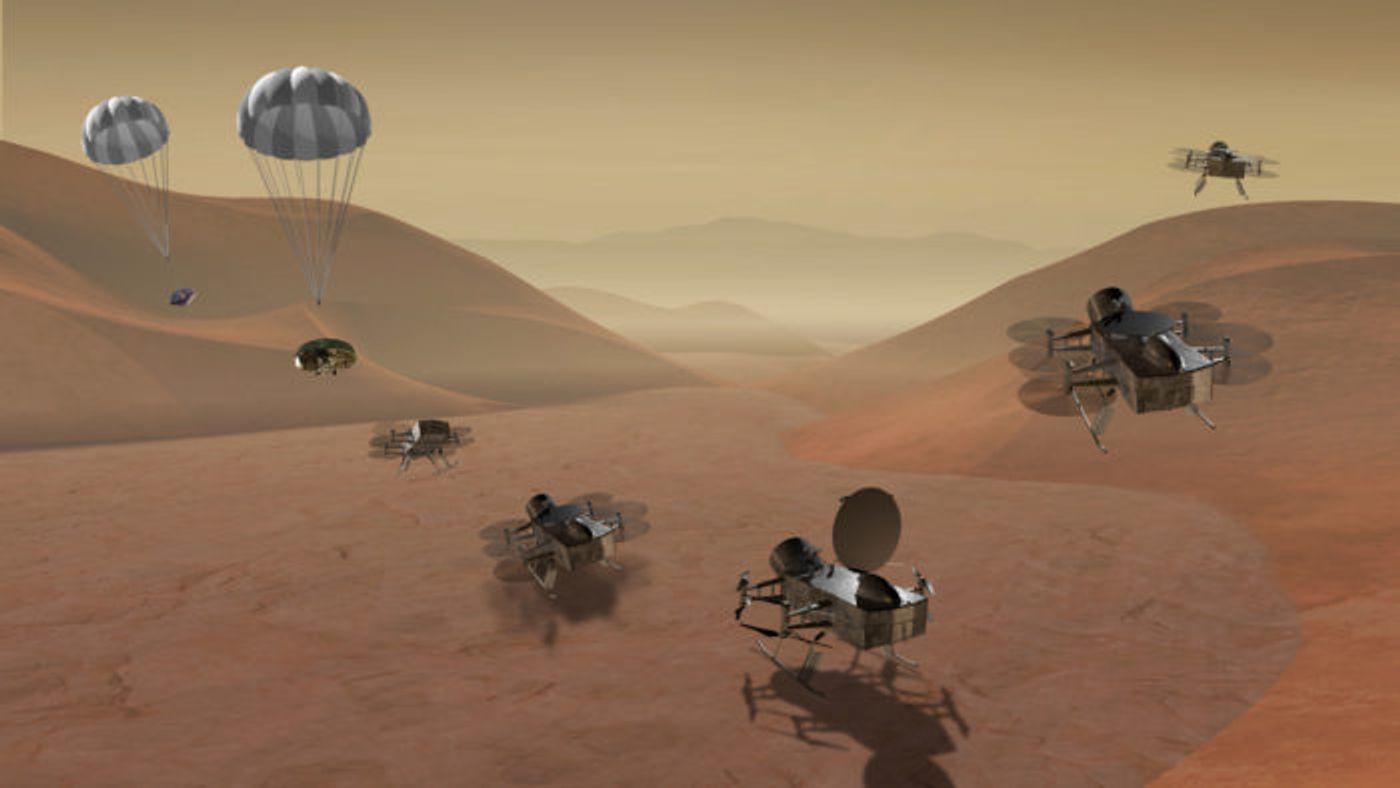'Dragonfly' Quadcopter Mission Could Study Titan's Habitability
Out of the dozens of moons that orbit Saturn, Titan is perhaps one of the most interesting. Not only is it the largest of them all, but planetary scientists seem confident that it could foster habitable conditions.
Given Titan’s unique environmental circumstances, it shouldn’t come as any surprise that NASA wants to study it more closely. Fortunately, a mission concept code-named ‘Dragonfly’ could bring humankind closer to achieving this goal in the near future.
Image Credit: Steve Gribben/Johns Hopkins APL
Assuming planetary scientists are right about Titan, it could harbor a dense atmosphere tantamount to Earth’s. That said, we should be able to send a drone-like quadcopter to Titan, where it can fly around and collect vital information for scientific analysis.
Related: Cassini spots methane clouds on Titan
Typical quadcopters are both small and light, enabling them to fight Earth’s gravitational pull with the help of its own atmospheric density. A quadcopter built for the Dragonfly mission, on the other hand, would be large and heavy. It would take full advantage of Titan’s low gravity and high atmospheric density to take flight.
So why an aerial drone rather than a land-crawling rover? The scientists involved with the project say that it would help scientists overcome various restrictions that come with land-based travel, including longevity, mobility, and range, just to name a few.
“There’s something very ‘simple’ about having a little drone flying around Titan,” explained Catherine Neish, an Earth Sciences professor and planetary geologist involved with the Dragonfly mission’s development.
“It’s clever in a way that people weren’t expecting and, I think, it’s audacious and exciting – and realistic.”
Related: Could humans survive on Enceladus or Titan?
The Dragonfly quadcopter would sport precision rotors that would make it highly maneuverable, along with numerous sensors that would monitor the moon’s environment for signs of habitability or possible traces of life.
On the other hand, Titan’s distance from the Sun nixes solar power from the list of viable energy sources for Dragonfly’s onboard tech. Instead, it would have to rely on plutonium-powered generators just like the Mars Curiosity rover. This would provide the vehicle with up to two years of runtime.
It should be interesting to see whether such a concept ever materializes and what it might find when it gets there. But for now, all we can do is continue making educated guesses with the limited data we have about Titan and its mysterious characteristics.
Source: University of Western Ontario









